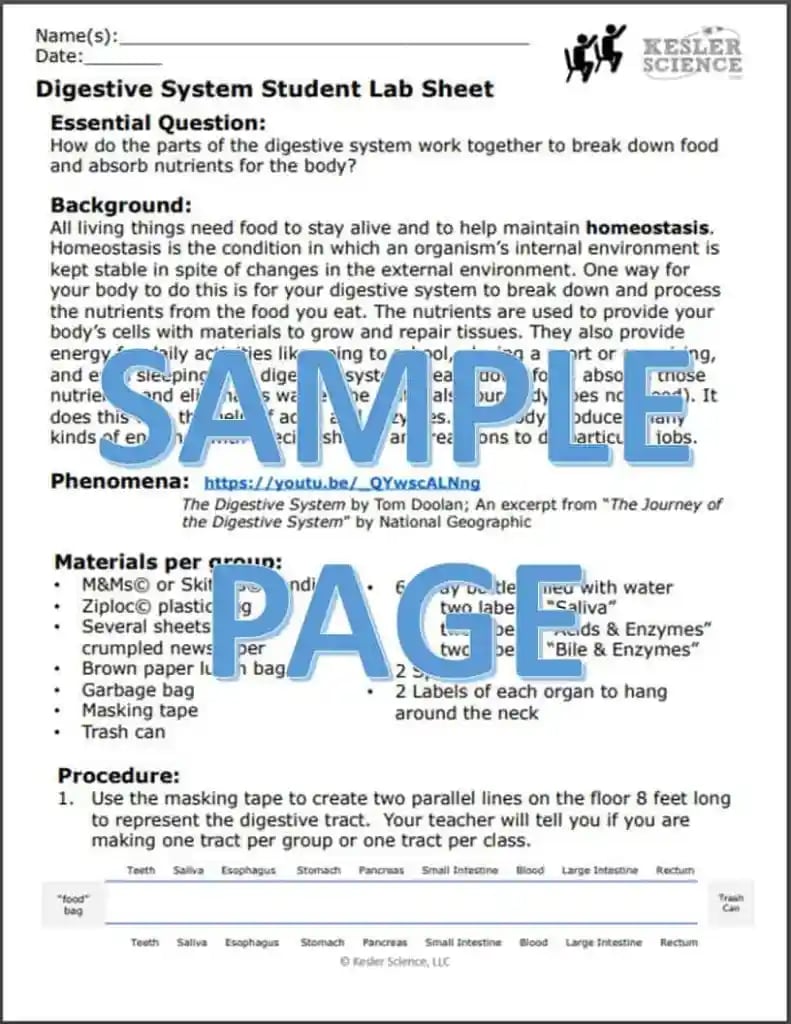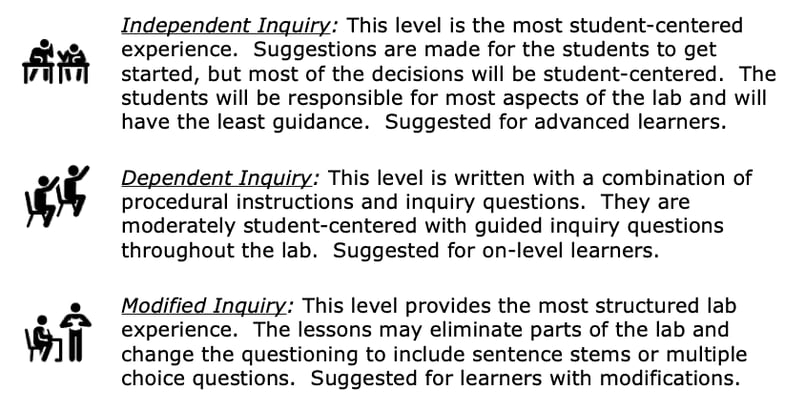Digestive System Inquiry Lab
Middle School Inquiry Lab on the Digestive System
In this lab, students will become a digestive system model and participate in the structure and function of the digestive system. Students will explore mechanical and chemical digestion, the structure and main functions of the digestive system, and the concepts of enzymes, peristalsis, and why we need food.
Note: There is an additional demonstration included in this lab with its own materials list.
Each inquiry lab will contain an essential question that will drive the lesson and make students think. For this lesson, the essential question is:
- How do the parts of the digestive system work together to break down food and absorb nutrients for the body?
BACKGROUND INFORMATION AND MATERIALS LIST:
Students will begin the lab by reading the essential question and background information. This can be done individually, as lab groups, or as a whole class. If you consider lab groups, you also might include some type of whole class formative checks before digging into the lab.

Materials List:
- M&Ms or Skittles candies
- Ziploc plastic bag
- several sheets of torn, crumpled newspaper
- brown paper lunch bag
- garbage bag
- masking tape
- trash can
- 6 spray bottles filled with water
- two labeled “Saliva”
- two labeled “Acids & Enzymes”
- two labeled “Bile & Enzymes”
- 2 sponges
- 2 labels of each organ to hang around the neck

PROCEDURE:
Have you ever heard the expression, “you are what you eat?” With this lab, students will get to see what happens with what they eat. Students will be assigned roles as organs of the digestive system. We know when food enters the body, the digestive process begins. Students will line up and pass food along the various organs of the digestive track. Mechanical and chemical digestion will become more evident in this lab, along with the understanding of the accessory organs as they release enzymes to help aid with digestion. From start to end, student will get their hands dirty trying to break down food just like the digestion system.
CHECK FOR UNDERSTANDING:
At this point in the lab, students will be checked for understanding by answering questions about their findings. Here are a few that come with the lab:
- Sequence the organs that food actually passes through during digestion. Your word bank is: esophagus, stomach, large intestine, mouth, small intestine, rectum.
- What organs, or body parts, are missing from this path, and what are their functions?
CONCLUSION
Students will go back to the essential question and write a CER (Claim, Evidence, Reasoning) to conclude the lab. Once completed, students will reflect back on their learning by answering the following questions:
- Describe the function of the digestive system.
- How do villi improve absorption in the small intestine?
- Meat tenderizer breaks down proteins in meat to make it softer. Compare this to the enzymes in your digestive system.
MODIFIED AND INDEPENDENT INQUIRY VERSIONS
All of the Kesler Science inquiry labs come with three different modification levels. Each lab is differentiated using the icons below.
STANDARDS ALIGNMENT
TEKS: 7.12 B – identify the main functions of the systems of the human organism, including the circulatory, respiratory, skeletal, muscular, digestive, excretory, reproductive, integumentary, nervous, and endocrine systems.

Download Over $100 in FREE Resources
For Middle School Science
Simply create a login below and gain immediate access to a selection of our Kesler Science product line worth $100 - for FREE. There's a full version of every product type! You'll also join tens of thousands of middle school science teachers who receive timely tips and strategies straight to their inbox.






